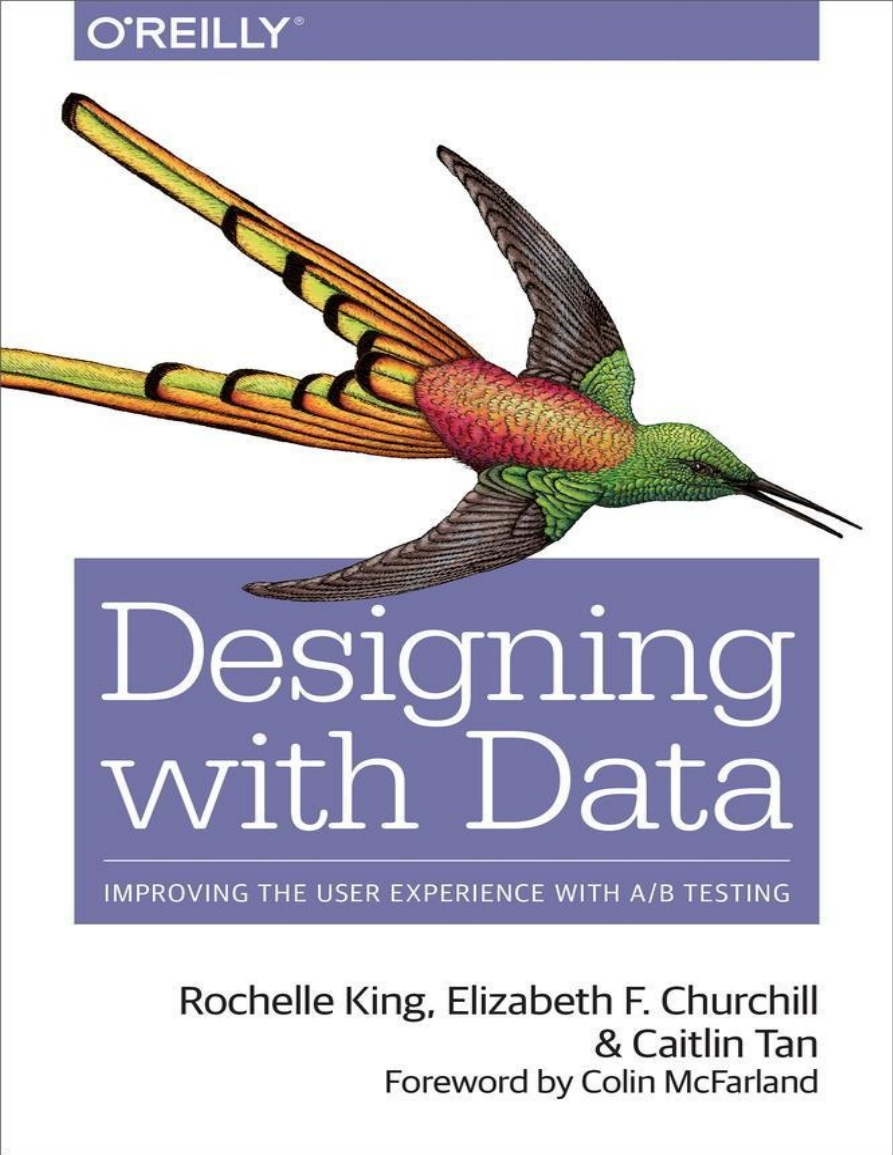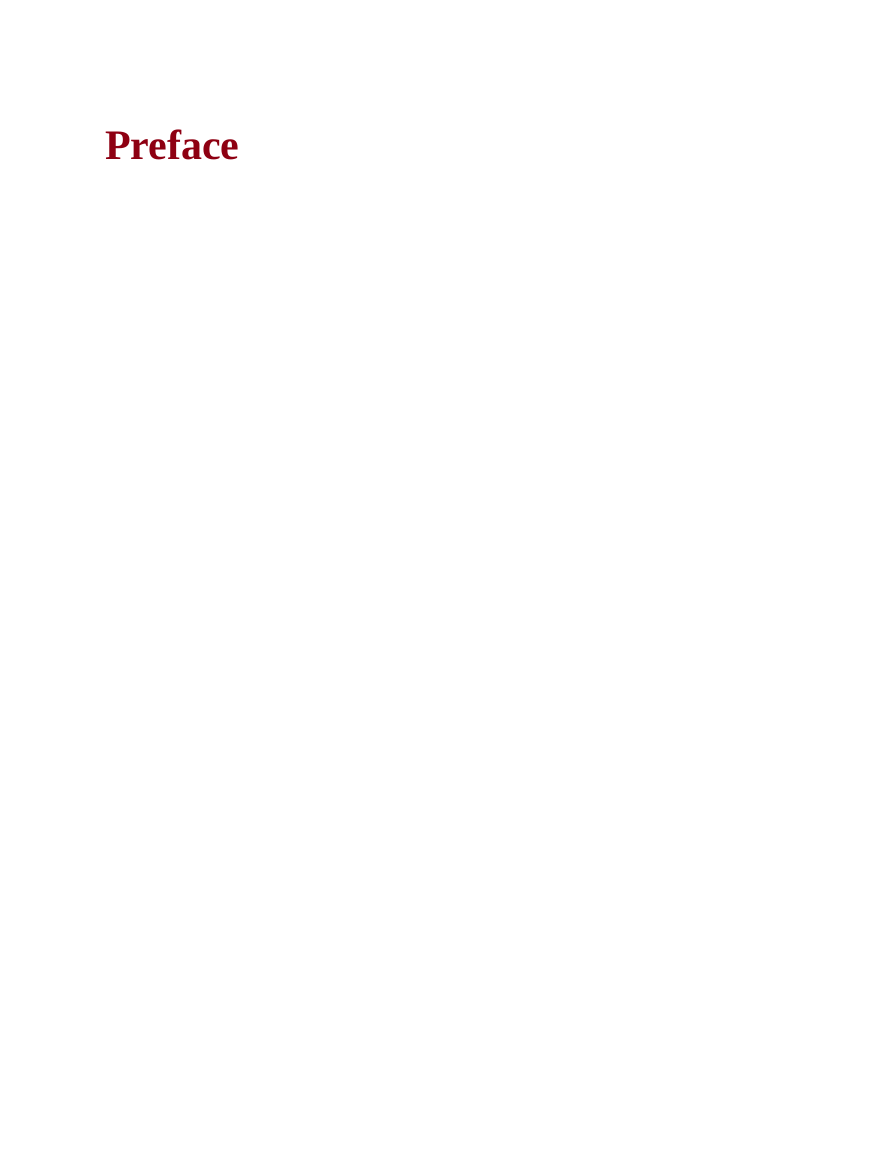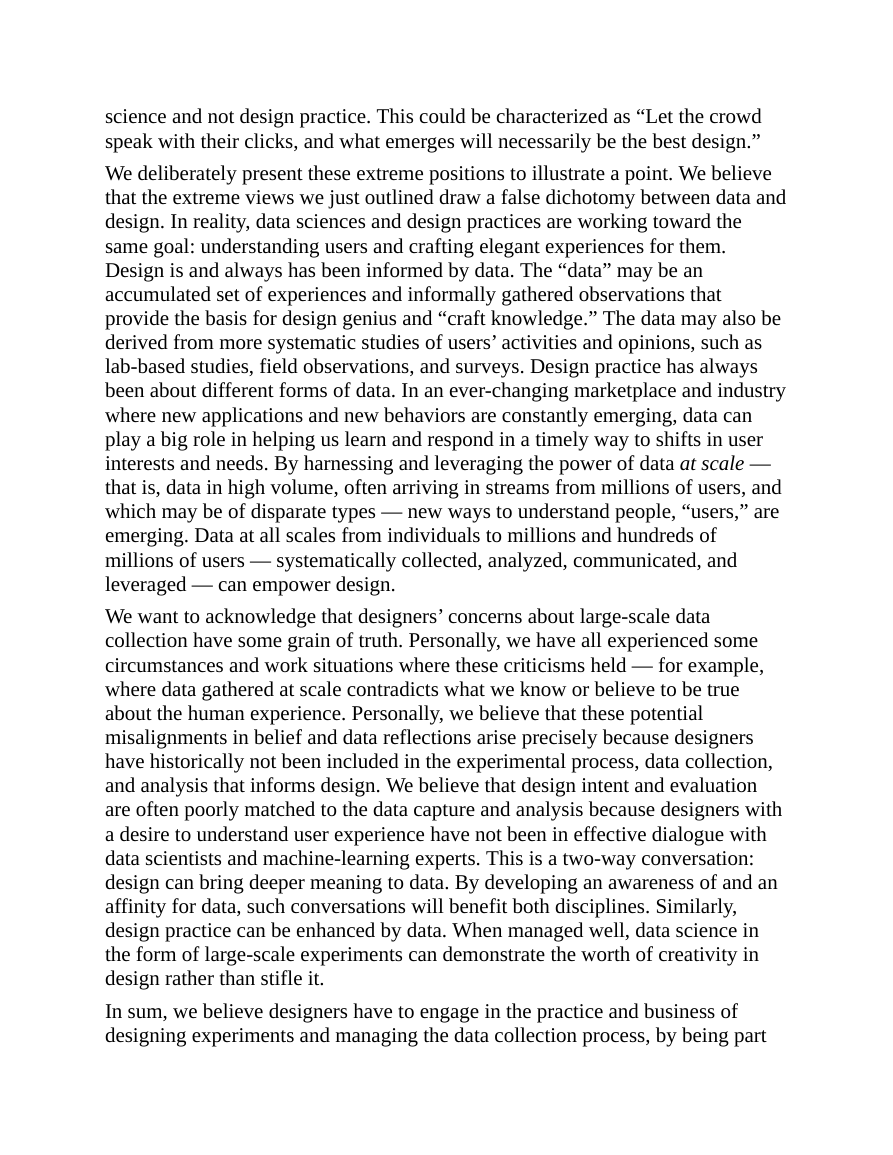Designing with Data: Improving the User Experience with A/B Testing
Praise for Designing with Data
Foreword
Preface
Design and Data: A Perfect Synergy
Our Focus: A/B Testing
Some Orienting Principles
Who Is This Book For?
Scope
About Us
A Word from Rochelle
A Word from Elizabeth
A Word from Caitlin
How This Book Is Organized
How to Read This Book
Introducing our “Running a Camp” Metaphor
O’Reilly Safari
How to Contact Us
Acknowledgments
Rochelle
Elizabeth
Caitlin
1. Introducing a Data Mindset
Data as a Trend
Three Ways to Think About Data
What Does This Mean for You as a Designer?
Data Can Help to Align Design with Business
On Data Quality
With a Little Help from Your Friends...
Data Producers
Data Consumers
What If You Don’t Have Data Friends (Yet)?
Themes You’ll See in This Book
Summary
Questions to Ask Yourself
2. The ABCs of Using Data
The Diversity of Data
Many Dimensions of Data
Why are you collecting data?
When is the data collected?
How is the data collected?
How much data to collect?
Why Experiment?
Learning About Causality
Statistically Significant, not Anecdotal
Informed Opinions about what will happen in the Wild
Basics of Experimentation
Language and Concepts
Race to the Campsite!
Experimentation in the Internet Age
A/B Testing: Online Experiments
Sampling Your Users Online
Cohorts and segments
Demographic information
New users versus existing users
Metrics: The Dependent Variable of A/B Testing
Detecting a Difference in Your Groups
How big is the difference you want to measure?
A big enough sample to power your test
Significance level
Your Hypothesis and Why It Matters
Defining a Hypothesis or Hypotheses
Know What You Want to Learn
Running Creative A/B Tests
Data Triangulation: Strength in Mixed Methods
The Landscape of Design Activities
Exploring and evaluating Ideas
Thinking Global and Thinking Local
Summary
Questions to Ask Yourself
3. A Framework for Experimentation
Introducing Our Framework
Working with Data Should Feel Familiar...
Three Phases: Definition, Execution, and Analysis
The Definition Phase
The Execution Phase
The Analysis Phase
Examples: Data and Design in Action
Summary
Questions to Ask Yourself
4. The Definition Phase (How to Frame Your Experiments)
Getting Started: Defining Your Goal
Defining Your Metric of Interest
Metric sensitivity
Tracking multiple metrics
Getting the full picture
Your metrics may change over time
Competing metrics
Refining Your Goals with Data
Identifying the Problem You Are Solving
Remember Where You Are
Building Hypotheses for the Problem at Hand
Example: A Summer Camp Hypothesis
Example: Netflix—transitioning from DVD Rentals to Streaming
The Importance of Going Broad
Multiple Ways to Influence a Metric
Focus on New and Existing Users
Revisit the Scope of Your Problem
Example: Netflix on the PlayStation 3
Involve Your Team and Your Data Friends
Which Hypotheses to Choose?
Consider Potential Impact
Using What You Already Know
Using Other Methods to Evaluate Your Hypotheses
Consider the Reality of Your Test
How much measurable impact do you believe your hypothesis can make?
Can you draw all the conclusions you want to draw from your test?
Balancing learning and speed
Keep Your Old Hypotheses in Your Back Pocket
Summary
Questions to Ask Yourself
5. The Execution Phase (How to Put Your Experiments into Action)
Designing to Learn
Engaging Your Users in a Conversation
Having Quality Conversations
Designing to extremes to learn about your users
Revisiting the minimum detectable effect
Designing the Best Representation of Your Hypothesis
Understanding Your Variables
Not all variables are visible
Your Design Can Influence Your Data
Example: Netflix Wii
Revisiting the Space of Design Activities
Avoiding Local Maxima
Different problems for summer camp
Directional testing: “Painted door” tests
Picking the right level of granularity for your experiment
Example: Netflix on Playstation 3
Example: Spotify Navigation
Experiment 1: Defining the hypothesis to get early directional feedback
Experiment 1: Designing the hypotheses
Interlude: Quick explorations using prototypes and usability testing
Experiment 2: Refining the “tabbed” navigation
“Designing” your tests
Other Considerations When Designing to Learn
Polishing your design too much, too early
Edge cases and “worst-case” scenarios
Taking advantage of other opportunities to learn about your design
Identifying the Right Level of Testing for Different Stages of Experimentation
Running parallel experiments
Thinking about “Experiment 0”
Summary
Questions to Ask Yourself
6. The Analysis Phase (Getting Answers From Your Experiments)
Vetting Your Designs Ahead of Launch
Lab Studies: Interviews and Usability Testing
Surveys
Working with Your Peers in Data
Launching Your Design
Balancing Trade Offs to Power Your Test
Weighing sample size and significance level
Getting the sample that you need (rollout % versus test time)
Who are you including in your sample?
Practical Implementation Details
Is your experience “normal” right now?
Sanity check: Questions to ask yourself
Evaluating Your Results
Revisiting Statistical Significance
What Does the Data Say?
Expected (“Positive”) Results
Unexpected and Undesirable (“Negative”) Results
When the World is Flat
Errors
Replication
Using secondary metrics
Using multiple test cells
Rolling out to more users
Revisiting “thick” data
Getting Trustworthy Data
Novelty effect
Seasonality bias
Rolling Out Your Experience, or Not
What’s Next for Your Designs?
Were you exploring or evaluating?
Was your problem global or local?
Knowing when to stop
Ramp Up
Holdback Groups
Taking Communication into Account
Case Study: Netflix on PlayStation 3
Many Treatments of the Four Hypotheses
Evolving the Design Through Iterative Tests
What If You Still Believe?
Summary
Questions to Ask Yourself
7. Creating the Right Environment for Data-Aware Design
Principle 1: Shared Company Culture and Values
Depth: Communicating Across Levels
Breadth: Beyond Design and Product
The Importance of a Learning Culture
The rewards of taking risks: Redefining “failure”
The value of developing your customer instinct
Principle 2: Hiring and Growing the Right People
Establishing a Data-Aware Environment Through Your Peers
Hiring for Success
Building the team with data involved from the start
Principle 3: Processes to Support and Align
Establishing a Knowledge Baseline
Establishing a Common Vocabulary
Developing a Rhythm Around Data Collection and Sharing
Project review meetings
Spreading data across the organization
Creating a Presence in the Office
Learning from the Past
Summary
Questions to Ask Yourself
8. Conclusion
Ethical Considerations
Ethics in Online Experimentation
Design Experimentation Versus Social Experimentation
Two “Power of Suggestion” Experiments
Toward Ethical A/B Testing
Key Concepts
Asking Questions, Thinking Ethically
Last Words
A. Resources
Keywords
Chapter 1
Chapter 2
Chapter 3
Chapters 4, 5, and 6
Chapter 7
Chapter 8
Books
Online Articles, Papers, and Blogs
Courses
Tools
Professional Groups, Meetups, and Societies
B. About the Authors
About the Authors
Colophon
Index
Copyright
















 2023年江西萍乡中考道德与法治真题及答案.doc
2023年江西萍乡中考道德与法治真题及答案.doc 2012年重庆南川中考生物真题及答案.doc
2012年重庆南川中考生物真题及答案.doc 2013年江西师范大学地理学综合及文艺理论基础考研真题.doc
2013年江西师范大学地理学综合及文艺理论基础考研真题.doc 2020年四川甘孜小升初语文真题及答案I卷.doc
2020年四川甘孜小升初语文真题及答案I卷.doc 2020年注册岩土工程师专业基础考试真题及答案.doc
2020年注册岩土工程师专业基础考试真题及答案.doc 2023-2024学年福建省厦门市九年级上学期数学月考试题及答案.doc
2023-2024学年福建省厦门市九年级上学期数学月考试题及答案.doc 2021-2022学年辽宁省沈阳市大东区九年级上学期语文期末试题及答案.doc
2021-2022学年辽宁省沈阳市大东区九年级上学期语文期末试题及答案.doc 2022-2023学年北京东城区初三第一学期物理期末试卷及答案.doc
2022-2023学年北京东城区初三第一学期物理期末试卷及答案.doc 2018上半年江西教师资格初中地理学科知识与教学能力真题及答案.doc
2018上半年江西教师资格初中地理学科知识与教学能力真题及答案.doc 2012年河北国家公务员申论考试真题及答案-省级.doc
2012年河北国家公务员申论考试真题及答案-省级.doc 2020-2021学年江苏省扬州市江都区邵樊片九年级上学期数学第一次质量检测试题及答案.doc
2020-2021学年江苏省扬州市江都区邵樊片九年级上学期数学第一次质量检测试题及答案.doc 2022下半年黑龙江教师资格证中学综合素质真题及答案.doc
2022下半年黑龙江教师资格证中学综合素质真题及答案.doc